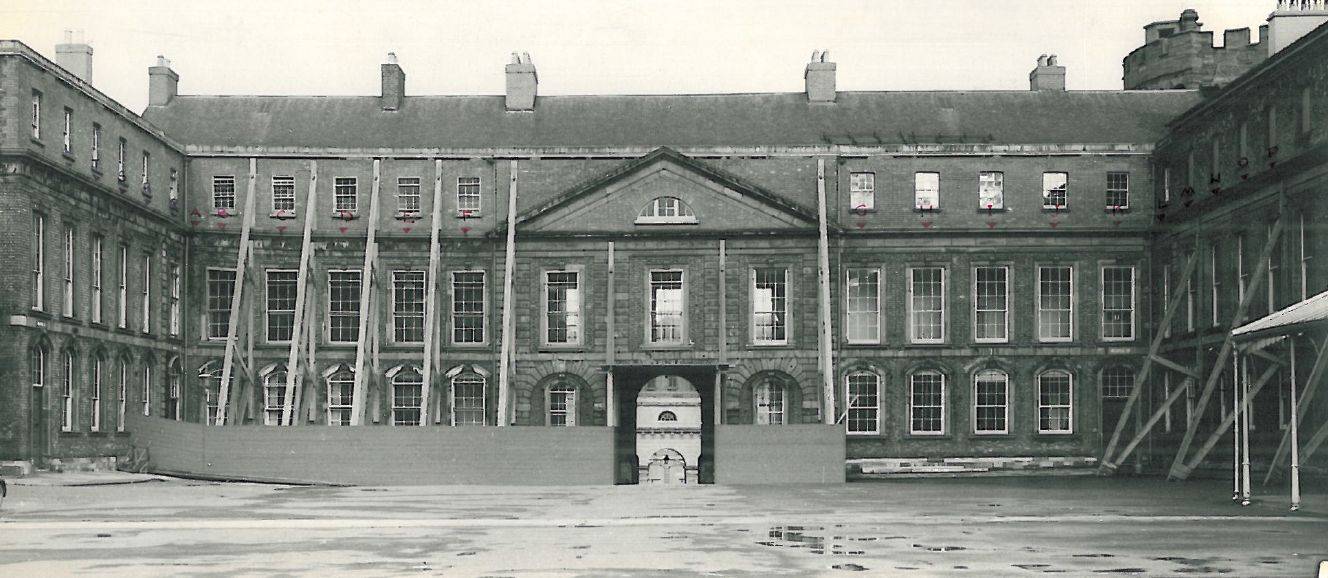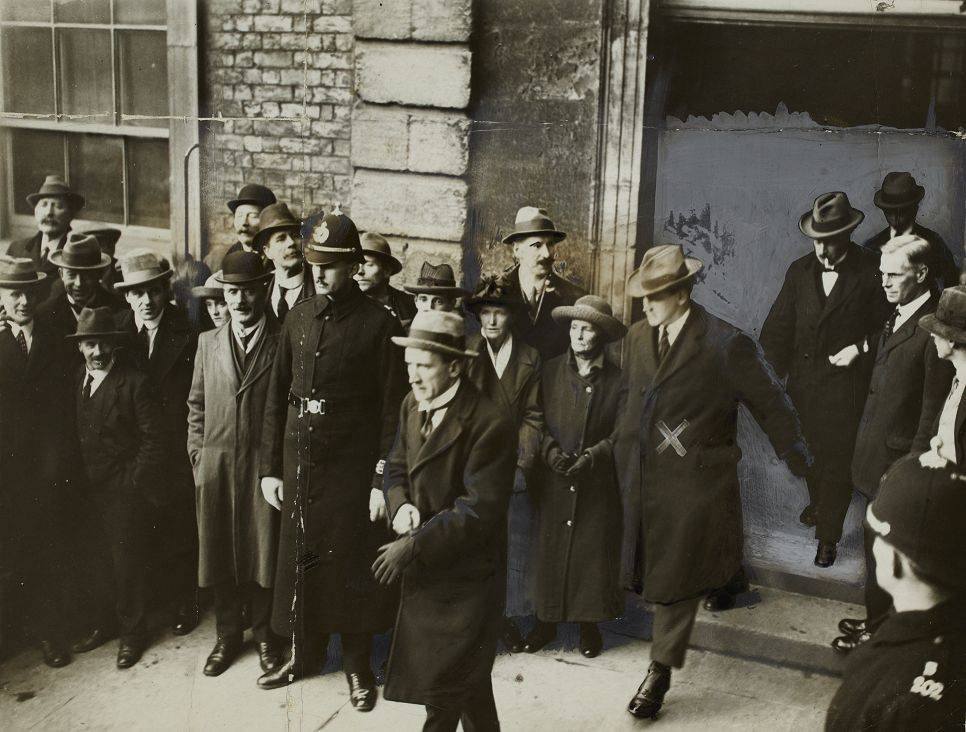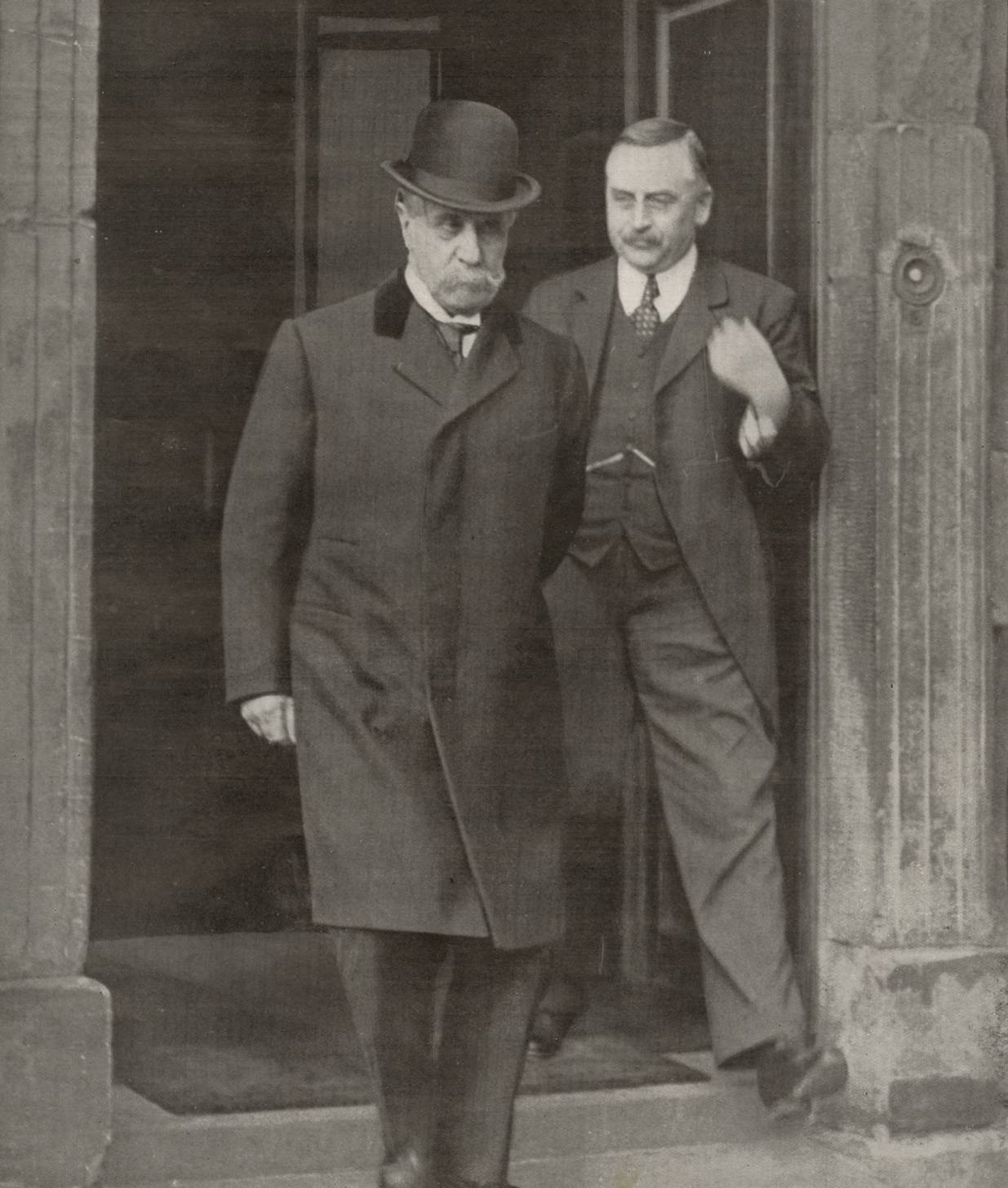One hundred years ago, on 16 January 1922, an event that The Irish Independent described as ‘certainly the most significant event in Irish history for hundreds of years’, took place on a cold Monday at Dublin Castle. At 1.45 pm that afternoon the machinery of government, and the Castle itself, were formally handed over by the last Lord Lieutenant, or Viceroy, of Ireland to the new Provisional Government. Often represented as a colourful ceremony, what follows is a description of what actually happened that day, drawn primarily from accounts that appeared in the newspapers of the time.
From an early hour that day, crowds had begun to gather at the Castle’s gate on Palace Street in anticipation of the events due to unfold, and ‘by noon thousands had assembled … stretching in each direction along Dame Street’. The handover itself had been mooted to take place at 12 pm, but owing to the late arrival of Michael Collins, who had been away from Dublin, events were delayed. When he arrived in the city, the Provisional Government, based in the Mansion House, elected him their ‘Chairman’ and at 1.20 pm telephoned to officials at Dublin Castle to say they were on their way.
Twenty minutes later, the eight members of the new Provisional Government, in three taxi cabs, made their way past cheering crowds, through the Castle’s Palace Street Gate and drove up the hill into the Upper Castle Yard. Led by Michael Collins, these ‘Strange Visitors’, as the Belfast Newsletter described them, quickly made their way through the doorway of the Chief Secretary’s Office in the north-east corner of the Yard. They were observed by journalists and photographers, Castle officials and soldiers, and a few lucky members of the public.
Once inside, the party made their way upstairs to the Privy Council Chamber, a ‘purple and gilded’ room above the archway that connected the Upper and Lower Castle Yards. The original room no longer survives – that wing of the Castle was reconstructed in the 1950s – however, The Irish Examiner remarked that the ‘simple stateliness of the Chamber with its two great brass chandeliers, pendant over the red cloth-covered table which occupies the centre of the room, must have impressed the new Ministers’.

The Privy Council Chamber occupied the three windows over the archway of the East Cross-Block. This image shows it before its reconstruction in the 1950s (Courtesy of the OPW Library).
A few minutes later, the last Viceroy of Ireland, Lord FitzAlan-Howard, arrived from the Viceregal Lodge (better known today as Áras an Uachtaráin) and made his way inside to receive his guests. No press or photographers were present in the room. However, as The Irish Examiner recorded:
Those curiously inclined were able to obtain a fair idea of what was going on in the Privy Council Chamber, for its windows look right on to the Upper Castle Yard, and as the room is lighted from both sides the movings within it could be followed with tolerable accuracy. The Viceroy stood at first at the fireplace at the northern end of the apartment … the seats on the right-hand side of the Lord Lieutenant’s Chair … were occupied by Mr. Michael Collins and two of his colleagues.
The Irish Independent added that ‘Through the windows Mr. Collins could be seen smiling and looking absolutely self-possessed as he met the Viceroy’.
The official account of the handover, released by Dublin Castle at 4 pm that day, reads:
In the Council Chamber at Dublin Castle this afternoon his Excellency the Lord Lieutenant received Mr. Michael Collins as the head of the Provisional Government provided for in article 17 of the Treaty of 6th December. Mr. Collins handed to the Lord Lieutenant a copy of the Treaty … and other members of the Provisional Government were then introduced. The Lord Lieutenant congratulated Mr. Collins and his colleagues, and informed them they were now duly installed as the Provisional Government … He wished them every success in the task that they had undertaken and expressed the earnest hope that under their auspices the ideal of a happy, free and prosperous Ireland would be attained.
Once the Treaty had been presented to the Viceroy, the members of the new Provisional Government were introduced to the heads of the different departments that oversaw the machinery of government. Just after 2.25 pm the ‘meeting’ broke up. ‘Mr Collins bounced out through the Chief Secretary’s doorway and pushed Mr. Duggan and Mr. Cosgrave into the leading car, evidently having seen sufficient photographing and filming during recent days’. The Viceroy departed a short while later, at 3 pm. So ended the moment of ‘Brief, Historic Formality’ that was the official handing over of Dublin Castle and the government of Ireland contained within it.

Michael Collins ‘bouncing’ out through the Chief Secretary’s door after the Handover (Courtesy of the National Library of Ireland).
Another official statement, this one signed by ‘Michael Collins, Chairman’ and released later that day, read: ‘The Members of the Provisional Government received the surrender of Dublin Castle at 1.45 pm today. It is now in the hands of the Irish nation’. Following the handover, Michael Collins wrote to Kitty Kiernan: ‘I am as happy a man as there is in Ireland today … Have just taken over Dublin Castle’. He was later to recall of the event:
How could I ever have expected to ‘see’ Dublin Castle itself – that dread Bastille of Ireland – formally surrendered into my hands by the Lord Lieutenant in the brocade-hung Council Chamber on my producing a copy of the London Treaty? We had red carpels laid for us on that momentous morning, and I recalled my only previous visit to those grim precincts as the driver of a coal-cart [sneaking in, disguised], with a price upon my head!
That evening, the Viceregal Household released a telegram the Viceroy had received from King George V. It read:
Am gratified to hear from your telegram of the successful establishment of the Provisional Government in Ireland. Am confident that you will do all in your power to help its members to accomplish the task that lies before them. – George R.I.
The Viceroy remained as the King’s representative in Ireland until the end of 1922.

Lord FitzAlan departing the Castle after the Handover (The Graphic, 21 January 1922)
Little is known about who said what to whom during the brief 45 minutes it took to conclude the handover. One anecdote describes how the Viceroy chastised Michael Collins for being seven minutes late. This seems unlikely, as he and his colleagues were in fact an hour and forty minutes late. Another, recorded by Tim Pat Coogan recounts how, on arriving, Collins was greeted by James MacMahon, the Under Secretary, with the words: ‘We’re glad to see you Mr Collins’, to which he allegedly replied, in his Cork accent, ‘Ye are like hell boy!’ In the absence of anything firmer than anecdote, we will likely never know for sure.
We do know, however, that on the Saturday before the Handover, Michael Collins was reported as saying: ‘I suppose our next step will be to walk into Dublin Castle, take possession and make a present of it to the Irish People’. And so he and his colleagues did. Dublin Castle remains the ‘present’ of the Irish people today, and is open to the public seven days a week, welcoming all those who wish to visit, explore and learn about its diverse and fascinating history.
